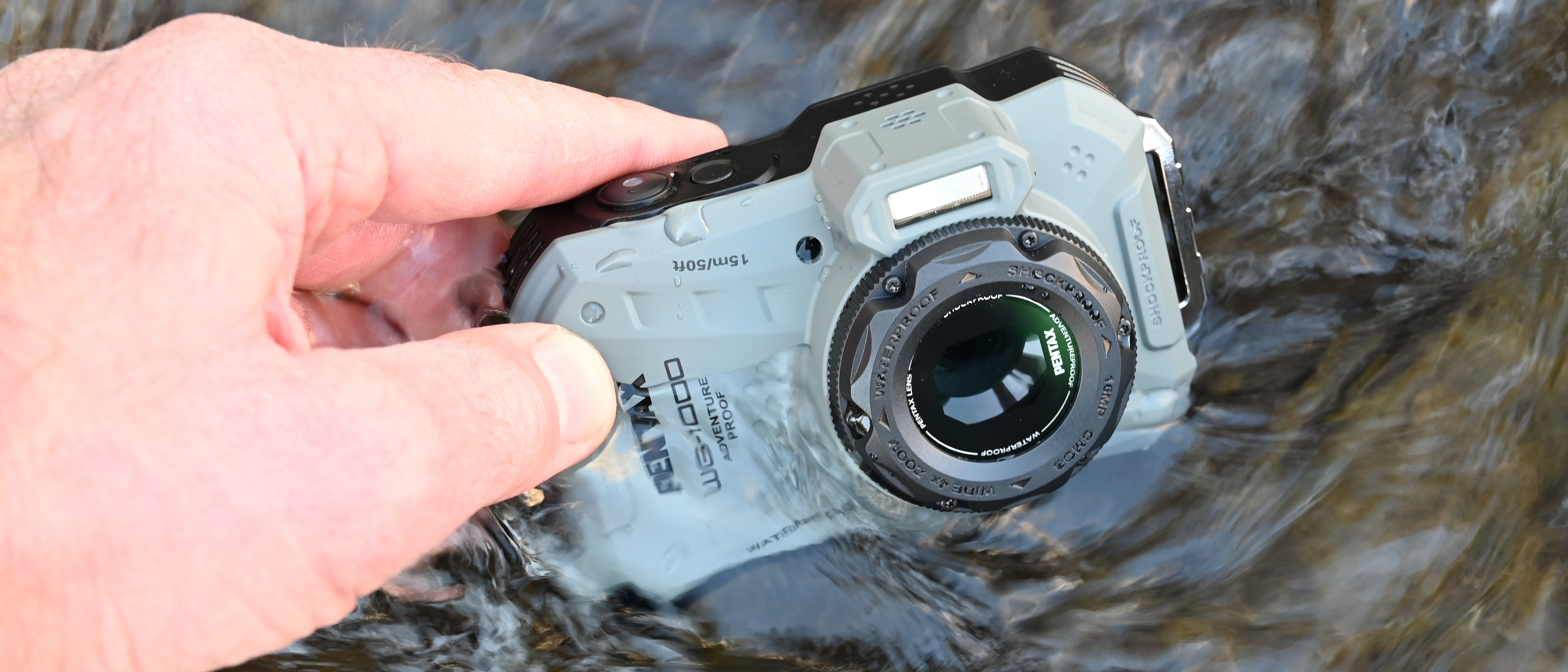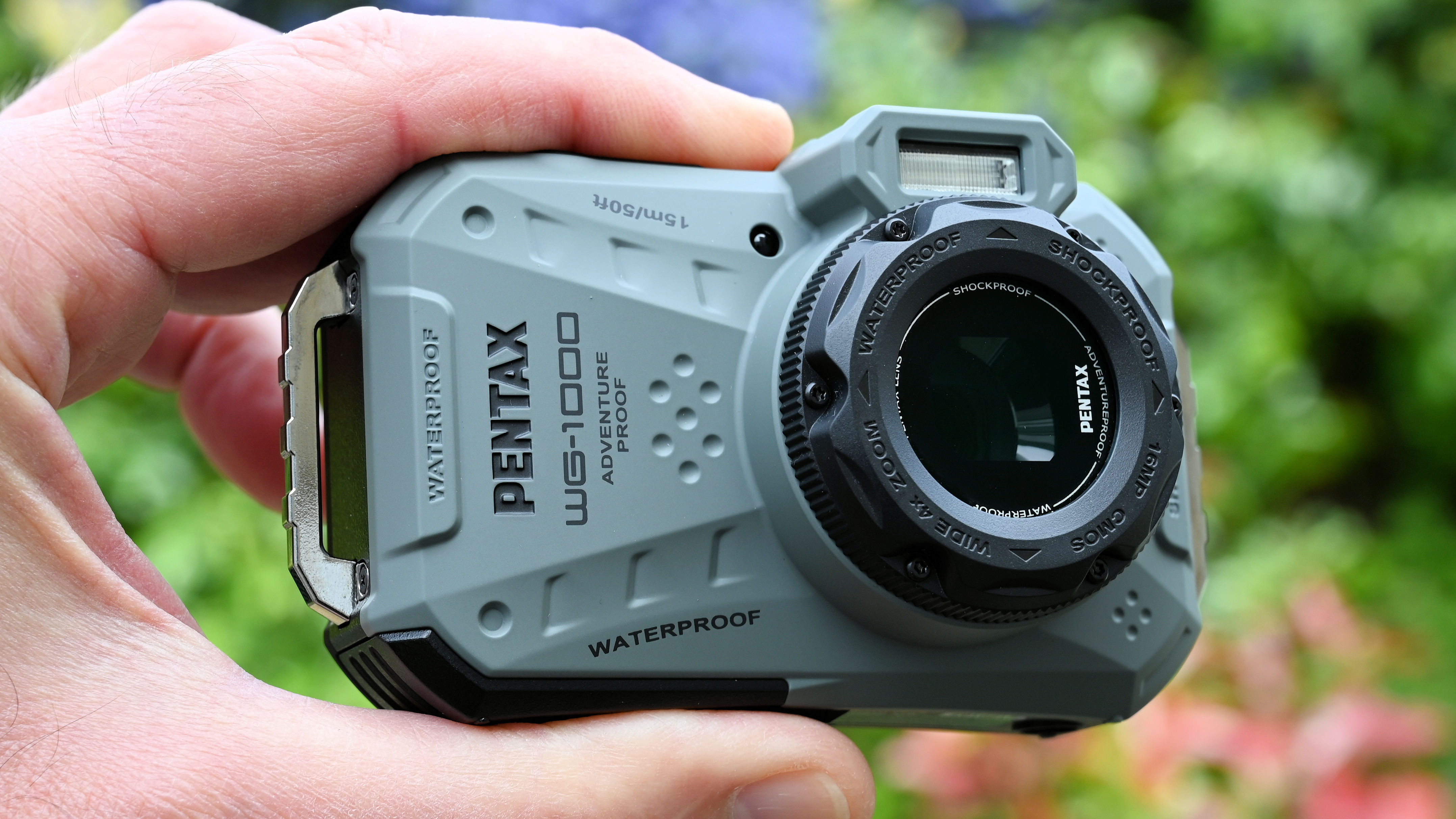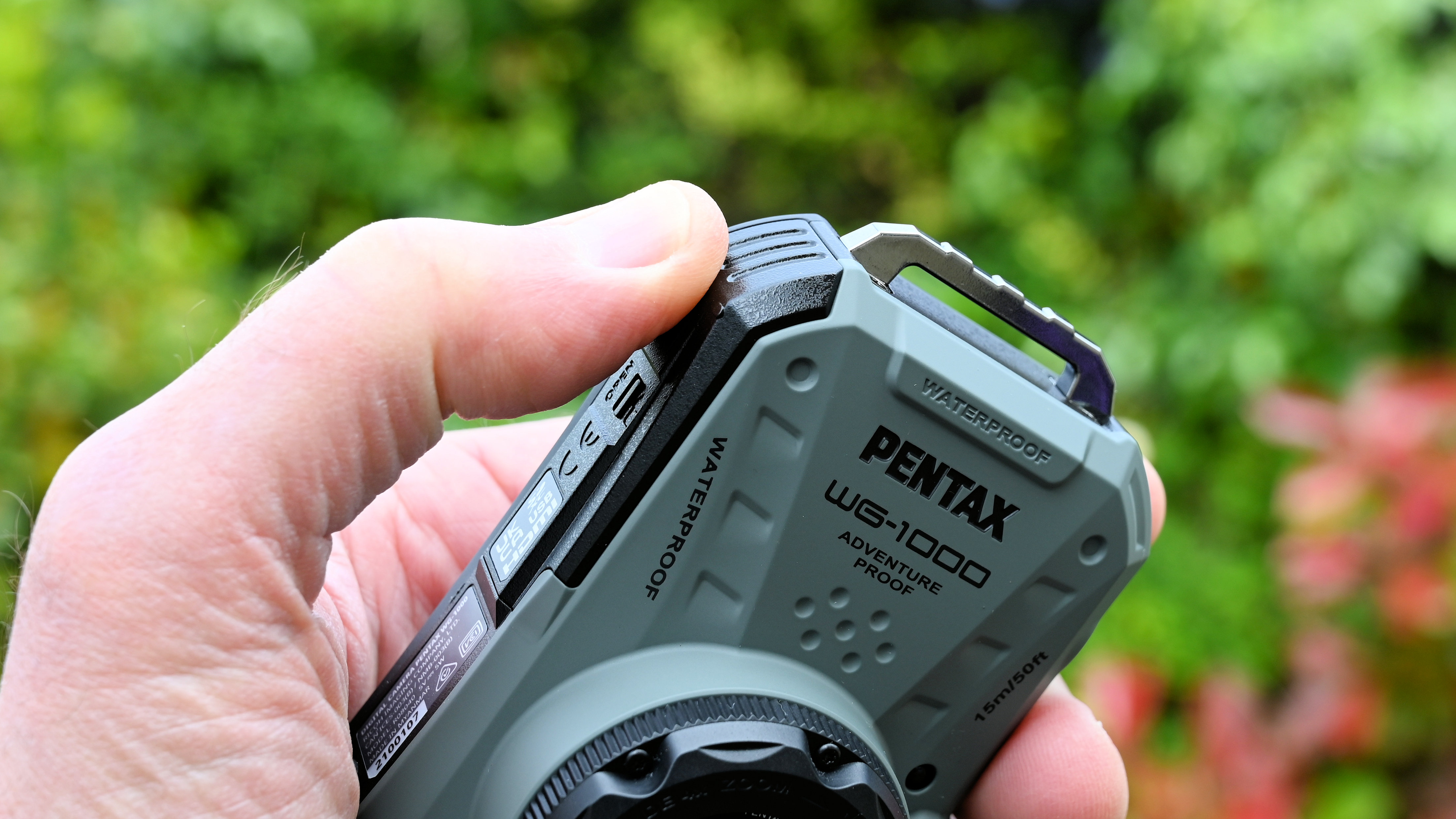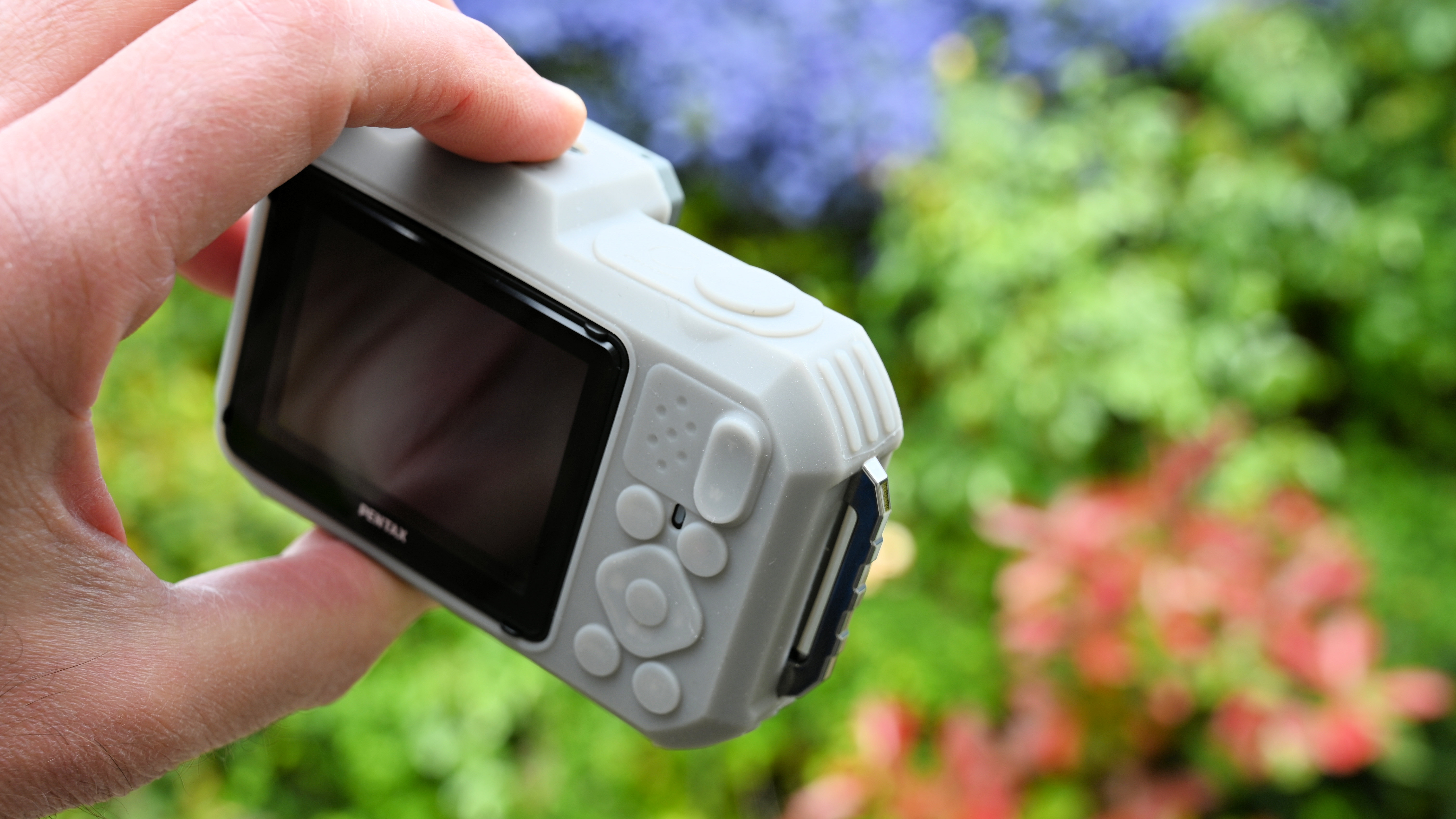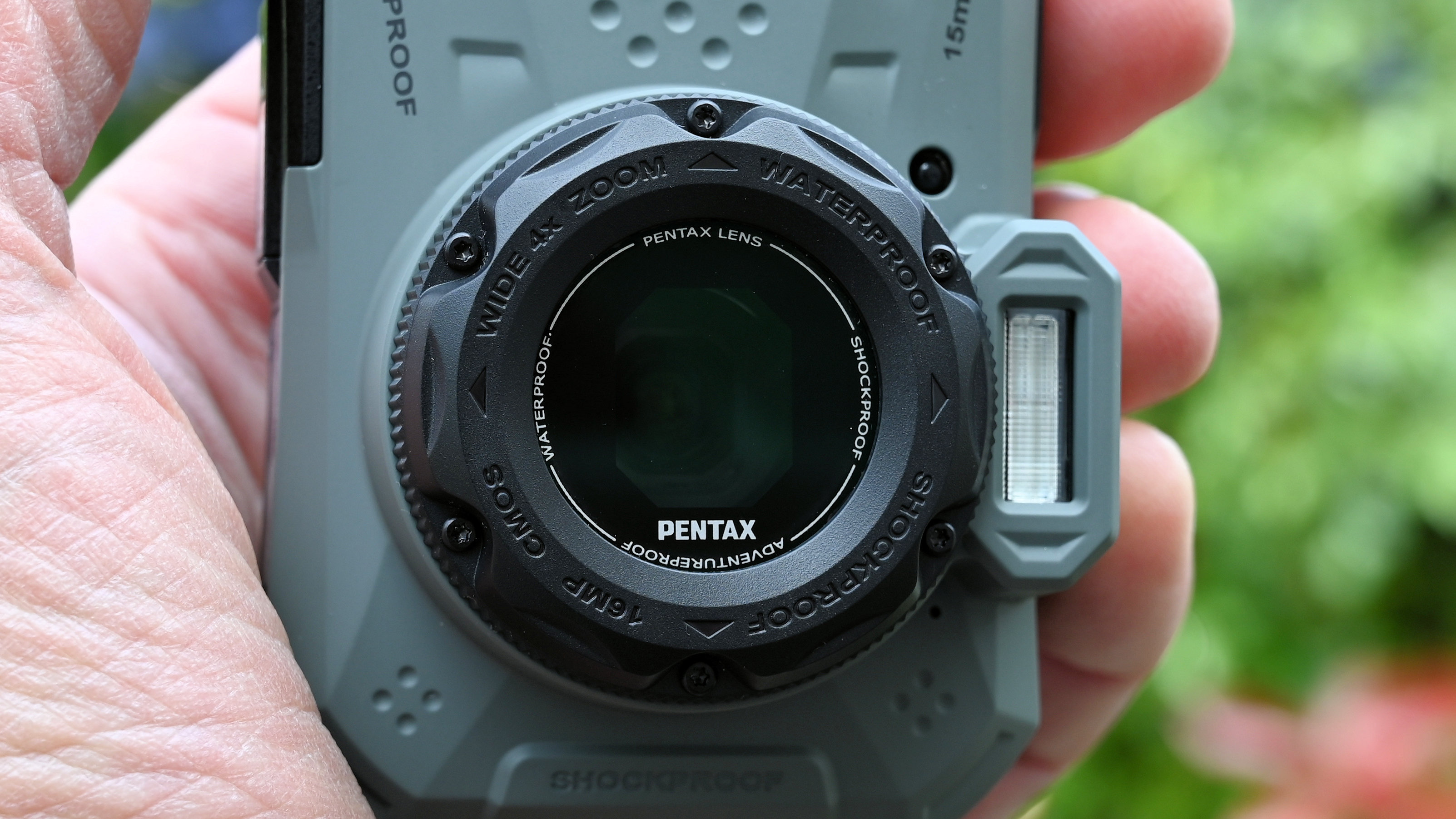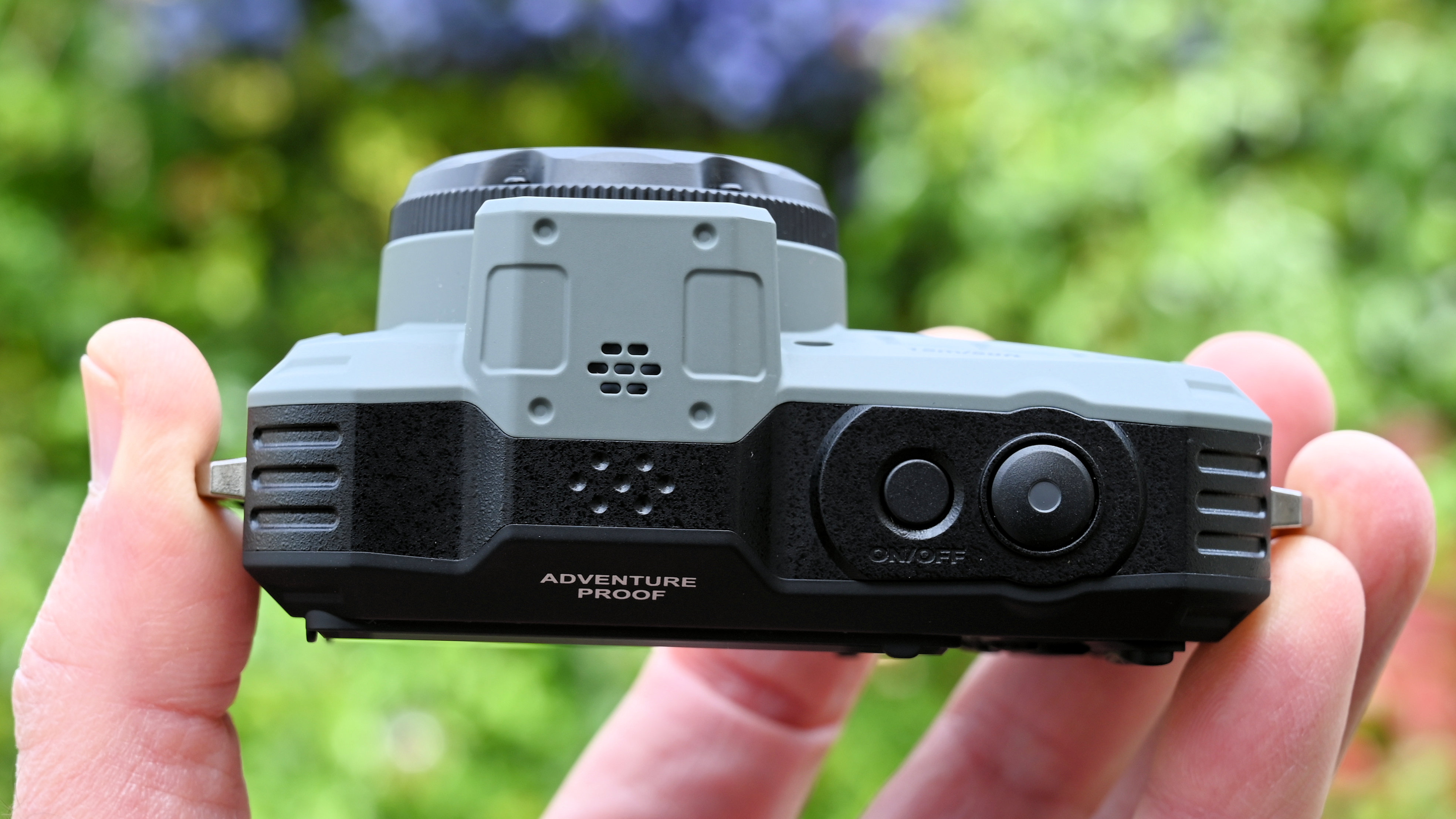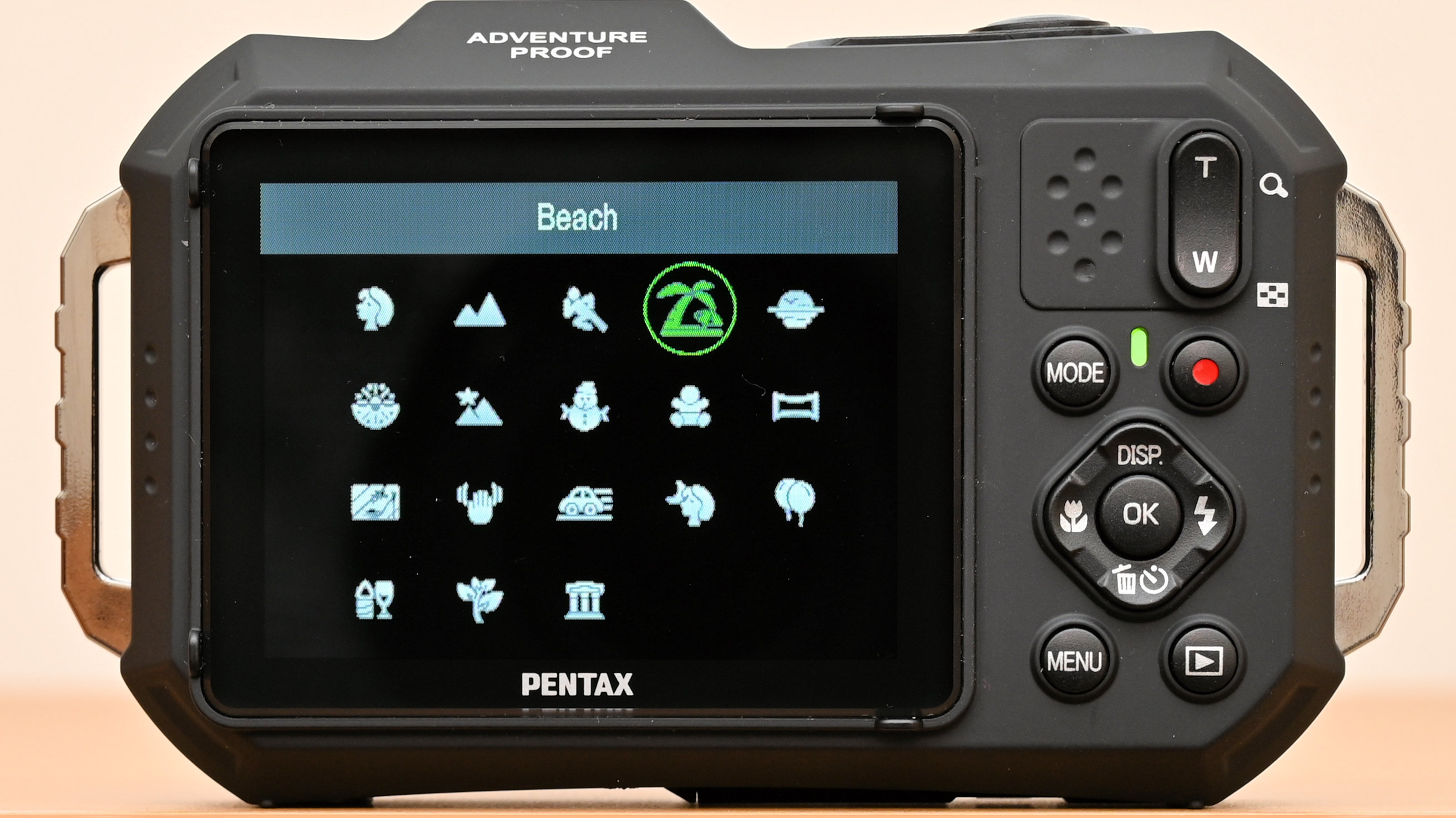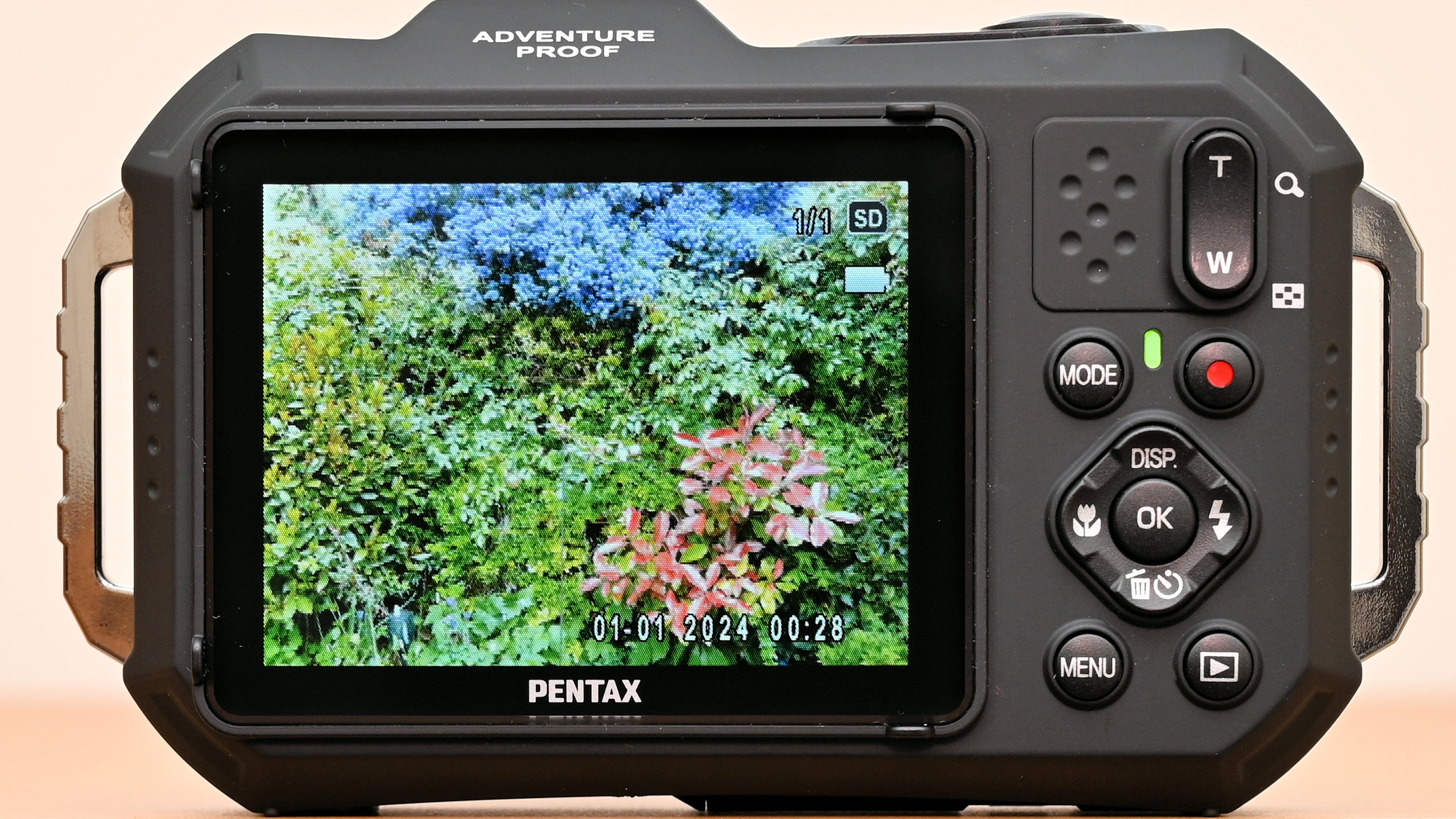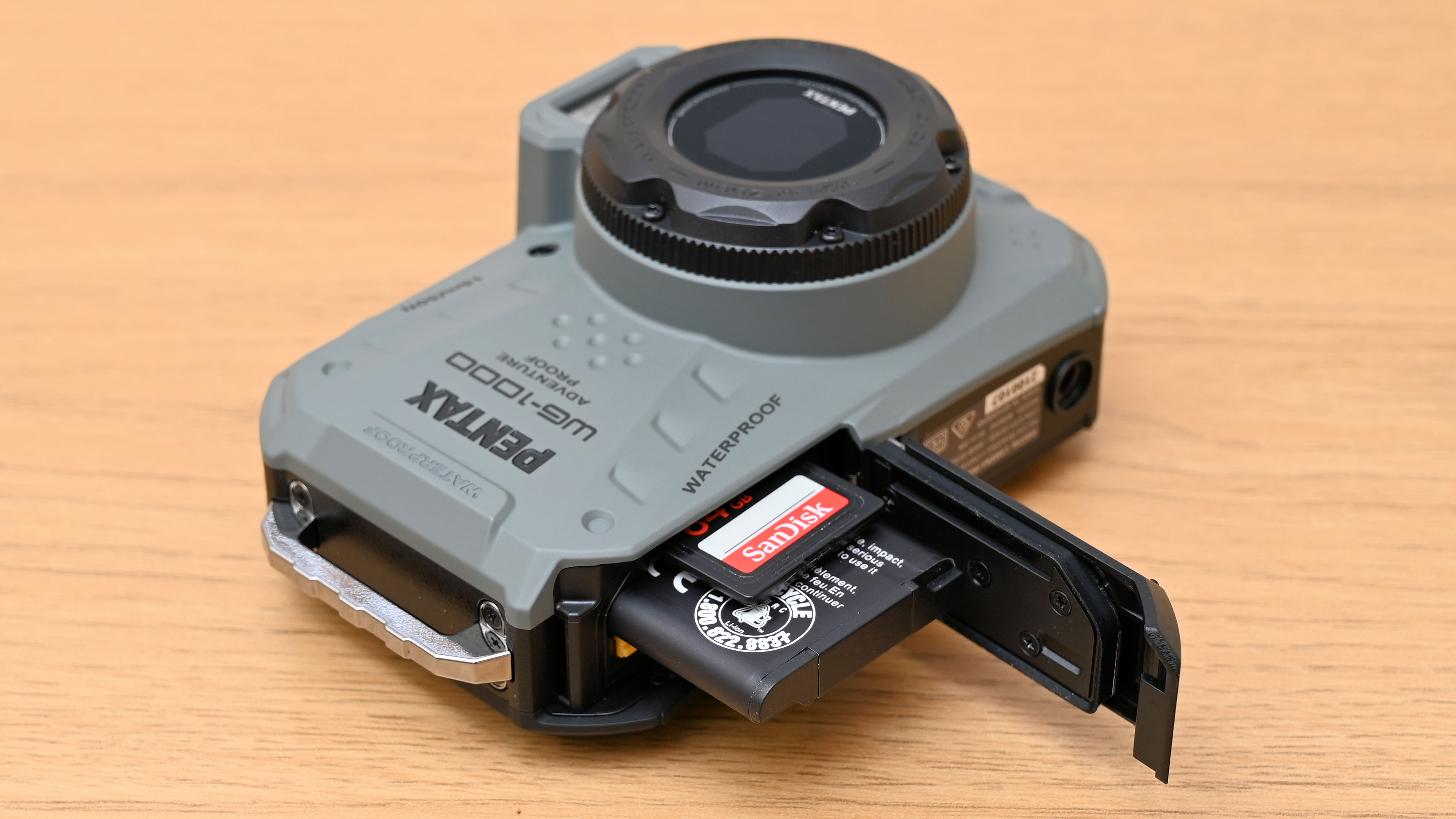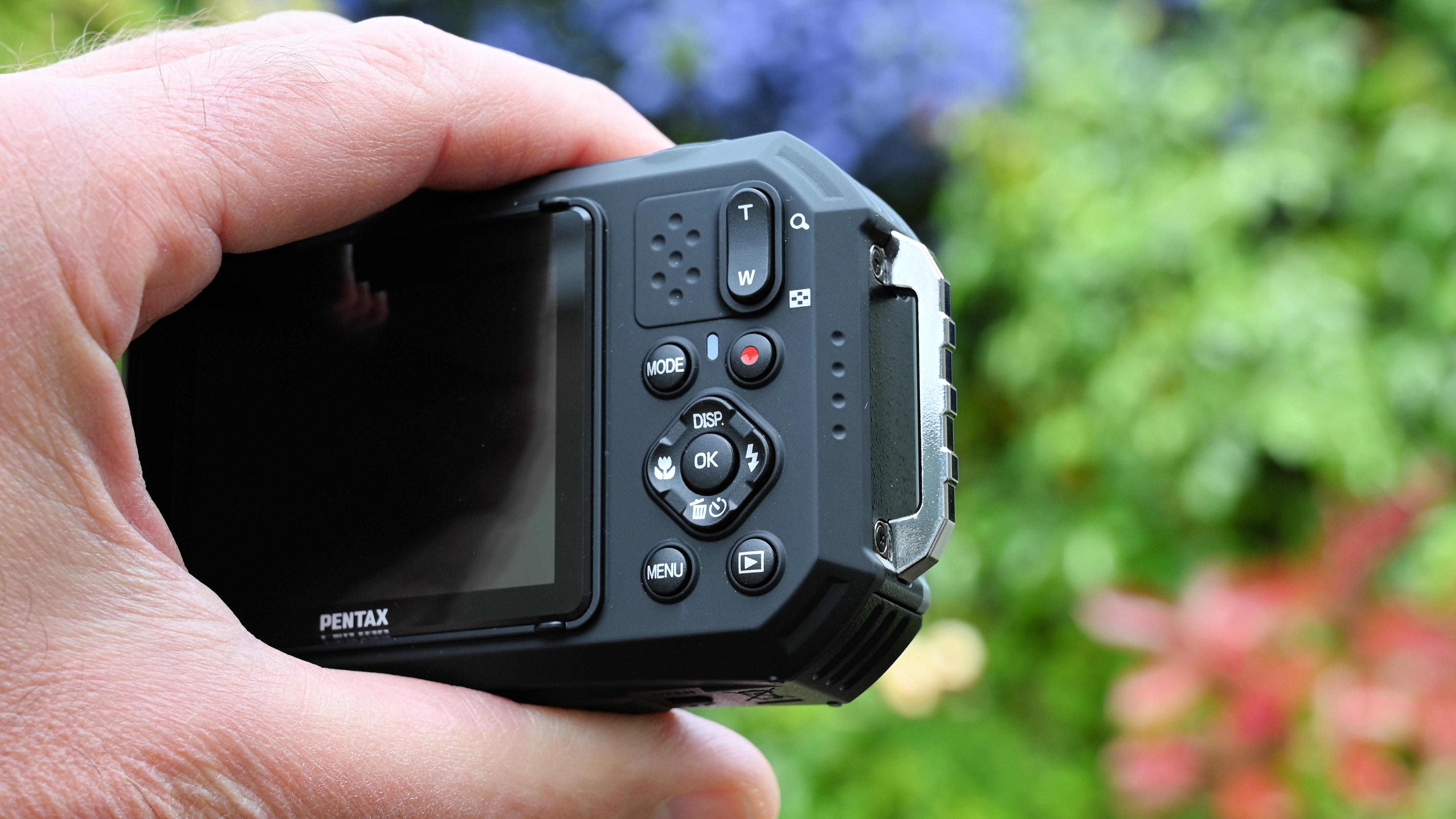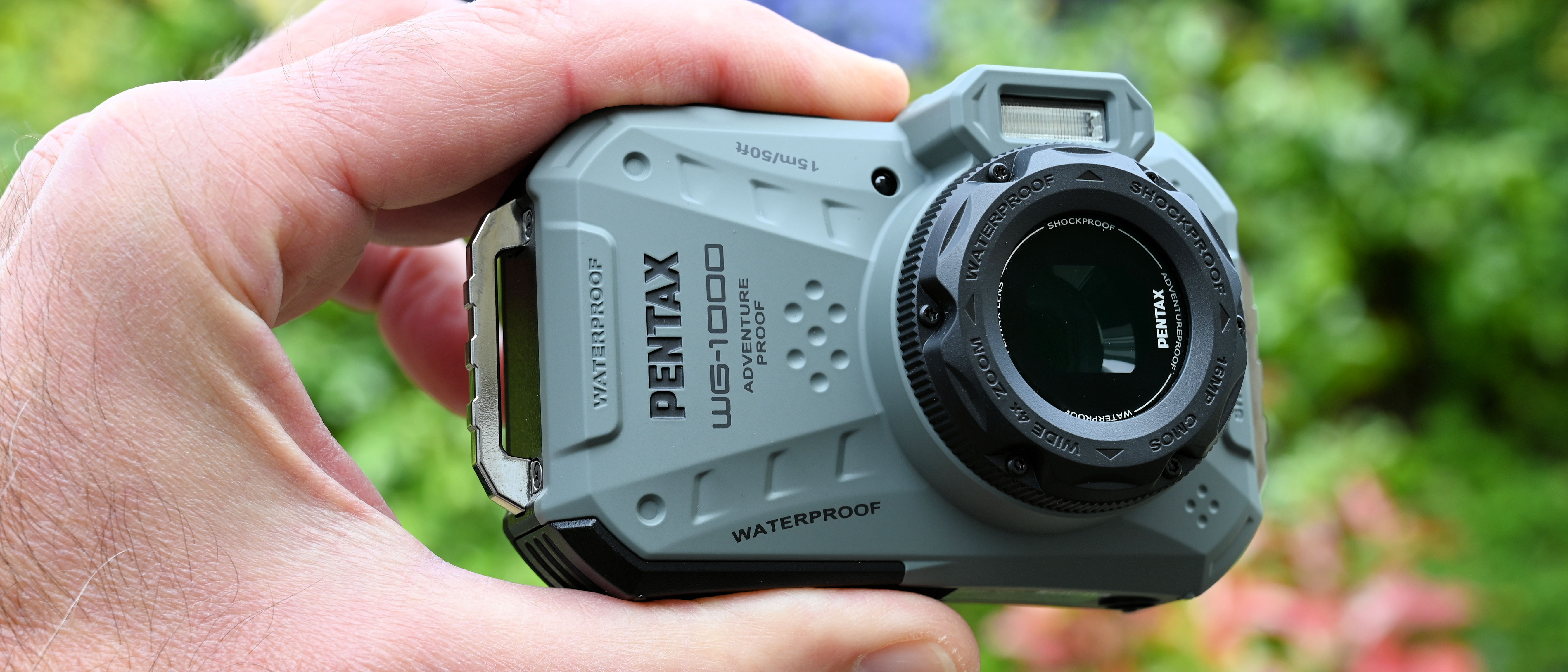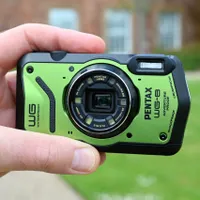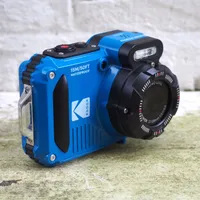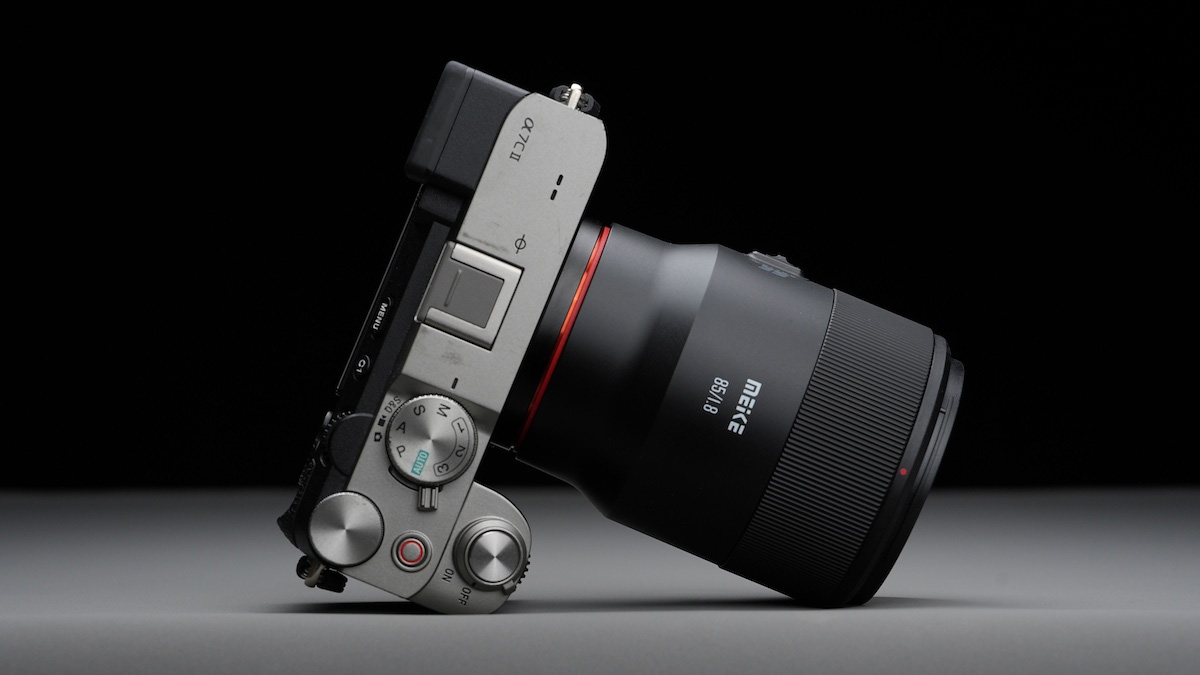Digital Camera World Verdict
I feel that the Pentax WG-1000 is a camera tailor-made for summer vacations. It’s not overly pricey but great for the beach, taking sea and sand in its stride with a fully waterproof and dustproof build. In some respects, however, it’s a little basic and has limited connectivity, with neither Wi-Fi nor Bluetooth.
Pros
- +
Waterproof and dustproof
- +
Can shoot underwater
- +
Shockproof
- +
4x optical zoom lens
Cons
- -
Middling image quality
- -
No Wi-Fi nor Bluetooth
- -
Fairly small, low-res screen
- -
No RAW quality mode
Why you can trust Digital Camera World
Pentax has been making cameras for donkeys’ years and is the only photographic manufacturer that’s still persevering with DSLRs. Its compact cameras have gone by the name of Ricoh since that company acquired Pentax back in 2011, but the Pentax badge has returned with the Pentax WG-8, which I’ve recently reviewed. The WG-1000 that I’m reviewing here has some of the same tough-guy credentials but has a lower-resolution for both its image sensor and rear screen, and lacks the extreme macro mode and LED array around the lens. Even so, it sets out to be one of the best underwater cameras as well as one of the best cameras for kids, with a suitably affordable price tag.
Pentax WG-1000: Specifications
Photo Resolution | 16.35MP |
Video Resolution | 1080p 30fps |
Image Sensor | 1/2.3" CMOS |
Selfie mirror | No |
Display | 2.7-inch, 230k dots |
Touchscreen | No |
Battery | Li-ion (300 shots) |
Connections | USB-C, HDMI |
Size (WHD) | 116x69x51mm / 4.6x2.7x2" |
Weight | 220g / 7.87oz |
Pentax WG-1000: Price
The Pentax WG-1000 is very competitively priced for a tough camera, listed at $195 / £249 / AU$399. That’s only about half the price of the Pentax WG-8, although that camera has a more sophisticated feature set and is a little closer to being indestructible, adding ‘crushproof’ and ‘freezeproof’ to its credentials, as well as venturing further underwater to a depth of 20 meters / 65.6’ instead of 15m / 49' (that’s more than deep enough for me, I’m not Jacques Cousteau).
Pentax WG-1000: Design & Handling
The Pentax WG-1000 is designed and built to take the knocks of a bruising, adventurous lifestyle and to brush off a fair amount of disrespect for gadgets. That’s really what sets it apart from regular budget-friendly compact cameras like the Yashica City 100.
The Yashica sports Wi-Fi, Bluetooth and a flip screen that can face the front for vlogging and selfies, but the Pentax has none of these. Instead, it’s all about soaking up those knocks. The headline features are that it’s waterproof to a depth of 15m / 49' for up to an hour of continuous use (IPX8, JIS Class 8), dustproof (IP6X, JIS Class 6) and sufficiently shockproof to withstand being dropped onto a sheet of 2-inch thick plywood from a height of 2m / 6.5'.
This is a camera that’s built to take a lot more punishment than just shooting on a drizzly day before being dried off and cosseted in a camera bag. You can shoot deep underwater, take pictures on the beach without worrying about it getting sandblasted, and chuck it down on your beach blanket from a considerable height when you’re done.
And there’s more. Pentax says that the camera offers dependable protection against ethanol, sodium hypochlorite and chlorine dioxide solutions, commonly used as disinfectants at the likes of medical facilities and production lines. So yes, the camera can hold its own against harsh chemicals as well.
So what’s in the box? Quite a lot, as it turns out. There’s both a skinny wrist strap and a wide strap complete with carabiner (to suit different adventures). You also get a silicone soft shell for if and when you’re feeling protective. There’s a charging/data USB cable and I like that this is supplied complete with a mains charger rather than assuming you’re going to provide one yourself. As is the way these days, the supplied Li-ion battery is charged in-camera rather than using a separate charging cradle.
The best camera deals, reviews, product advice, and unmissable photography news, direct to your inbox!
Some of the main features are written across the front of the camera. As well as waterproof, shockproof and adventureproof, there’s also lettering to proclaim a 16MP CMOS image sensor and a Wide 4x Zoom. Indeed, the camera features a back-illuminated image sensor although it’s physically very small, of the 1/2.3" format.
The lens has a 4x optical zoom capability but it’s not overly ‘wide’, equating to 27-108mm in full-frame terms. As usual, you can boost the telephoto zoom range with ‘digital zoom’ interpolation, with the normal drop in image quality, as the software has to guess what’s in between the pixels it can actually see. The front of the camera also plays host to a small flash module.
There are large and purposeful looking strap lugs on both sides of the camera. Up on top, the layout is simplicity itself, featuring just a built-in microphone, an on/off switch and a shutter-release button. The camera therefore lacks the shooting mode dial that takes pride of place on the top panel of the pricier Pentax WG-8.
Instead of a mode dial for direct access, the back panel has a ‘Mode’ button for accessing various shooting modes via a menu system. The main shooting modes on offer are Auto, Program AE, Manual, Underwater and Movie. There’s also a raft of scene modes to choose from, including Portrait, Landscape, Sport, Beach, Sunset, Fireworks, Night Landscape, Snow, Children, Panorama, Glass, Anti-Shake, Panning Shot, Night Portrait, Party, Indoor, Leaf and Museum, which should cover most eventualities.
On top of that, there’s a selection of color modes including Japan Style (enhances bluish hues), Italian Style (enhances greenish hues) and French Style (enhances reddish hues), plus black & white, sepia, negative and sketch. The wealth of scene modes and color modes goes some way to making up for the lack of a RAW quality capture mode but you’re still stuck with what you shoot rather than being able to make RAW adjustments at the editing stage.
The back of the camera has a very similar layout to that of the Pentax WG-8, but with the addition of the Mode button that I’ve just mentioned and a couple of other button differences. There’s the same T/W (Telephoto/Wide) rocker switch at the top for the motorized zoom lens, and a time-honored 4-way pad for accessing various functions, with an OK button at its center.
A bigger difference is that whereas the WG-8 has a 3.0-inch rear screen with a respectable resolution of 1040k dots, the screen of the WG-1000 is smaller and has a lower resolution, equating to 2.7-inch, 230k dots. And I think that really is disappointingly low-res nowadays, especially given the camera’s lack of a viewfinder. It’s also not a touchscreen and has no tilt or vari-angle mechanism.
Down under, there’s a suitably waterproof flap on the bottom panel that opens to reveal the Li-ion battery chamber, a memory slot for (thankfully) full-sized SD/HC/XC memory cards rather than tiny microSD cards, and connection ports for USB-C and HDMI Type-D. The rechargeable Li-ion battery has sufficient stamina for around 300 shots, which is pretty generous.
Rounding off the features list are face-detection autofocus, an AF assist lamp, single, continuous and high-speed continuous drive modes, and even blink detection. There’s a self-timer delay with options for 2 seconds, 10 seconds and ‘smile detection’, as well as interval shooting with options of 30 seconds or 1 / 5 / 10 minutes. You have to go a long way to find a camera that can’t shoot video as well as stills these days, and the WG-1000 obliges with movie resolutions of up to 1080p FullHD at 30fps or 640x480 pixels at 120fps for slow-motion capture. 4K UHD movie capture isn’t available.
Pentax WG-1000: Performance
When it comes to performance, the contrast-detection autofocus system can be pretty pedestrian and a little prone to hunting in tricky conditions, but it has a good hit rate in terms of accuracy throughout my testing. I’d say that sharpness is acceptable rather than particularly good, and it’s a little disappointing towards the edges of the frame at the wide-angle end of the zoom range.
I found that exposure metering proved more accurate and consistent in this camera than in the pricier Pentax WG-8, giving rise to better image quality on a shot-to-shot basis. During my tests, the WG-8 was often prone to slight overexposure, resulting in images that looked a little washed out.
The reduction from 20MP to 16.35MP seems to pay dividends in terms of a reduction in high-ISO image noise. Sure, noise gets steadily worse as you go up the scale, with fine detail being progressively smoothed over, but it’s not overly bad even at the maximum sensitivity of ISO 3200. The following gallery contains images of a model motorcycle under low natural lighting coming in through a window, at all ISO settings from ISO 100 to ISO 3200, so you can see for yourself.
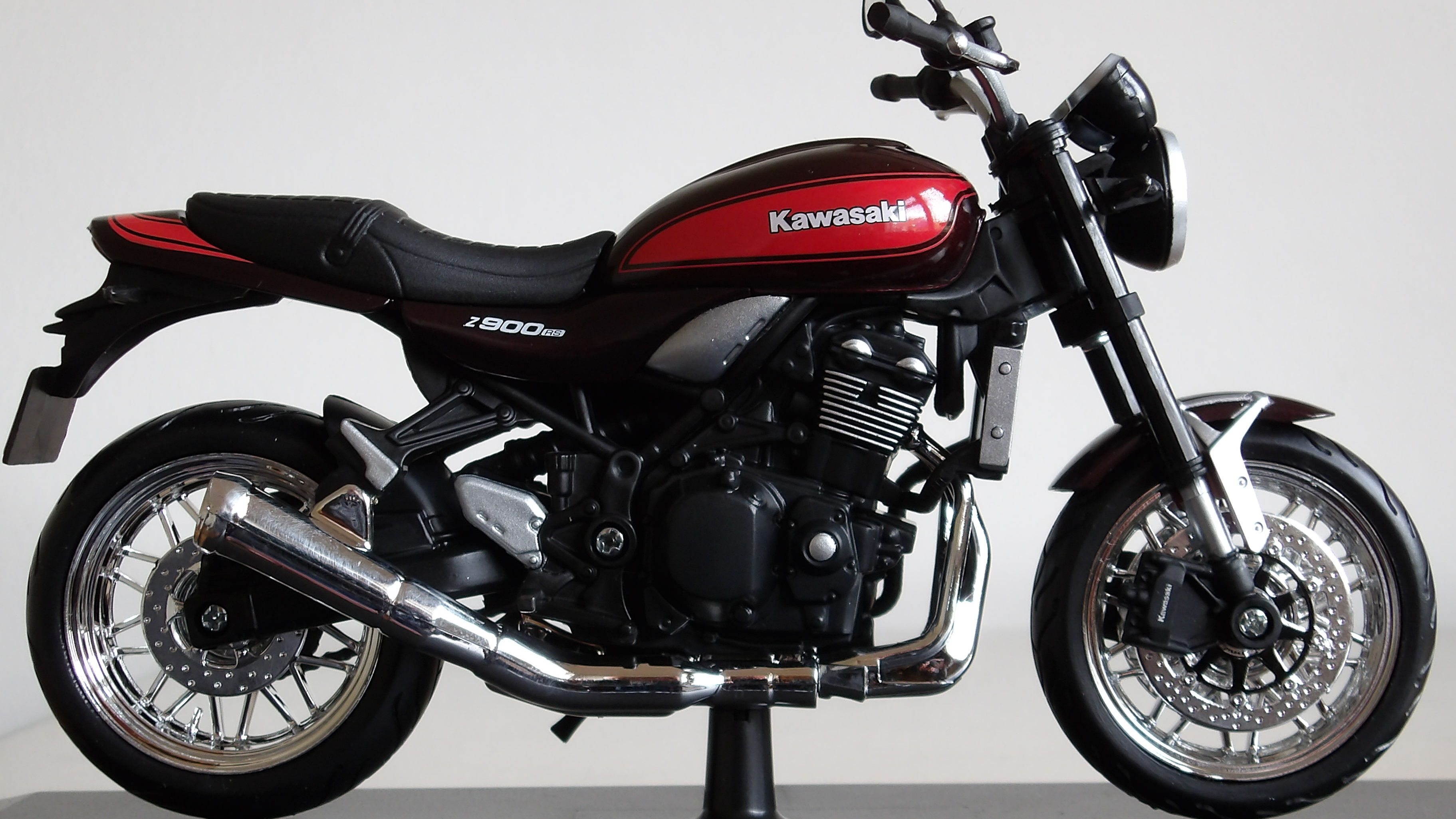
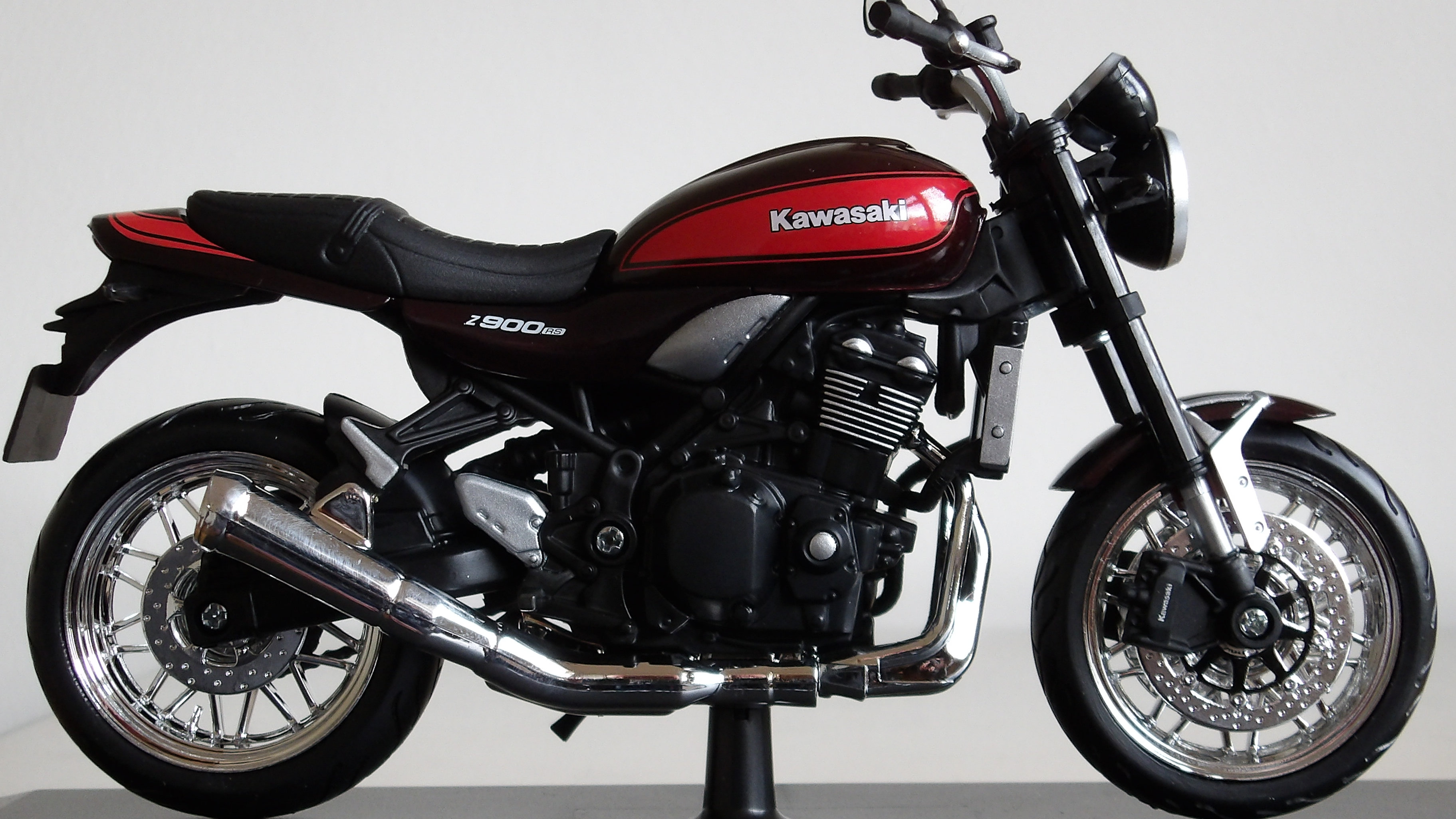

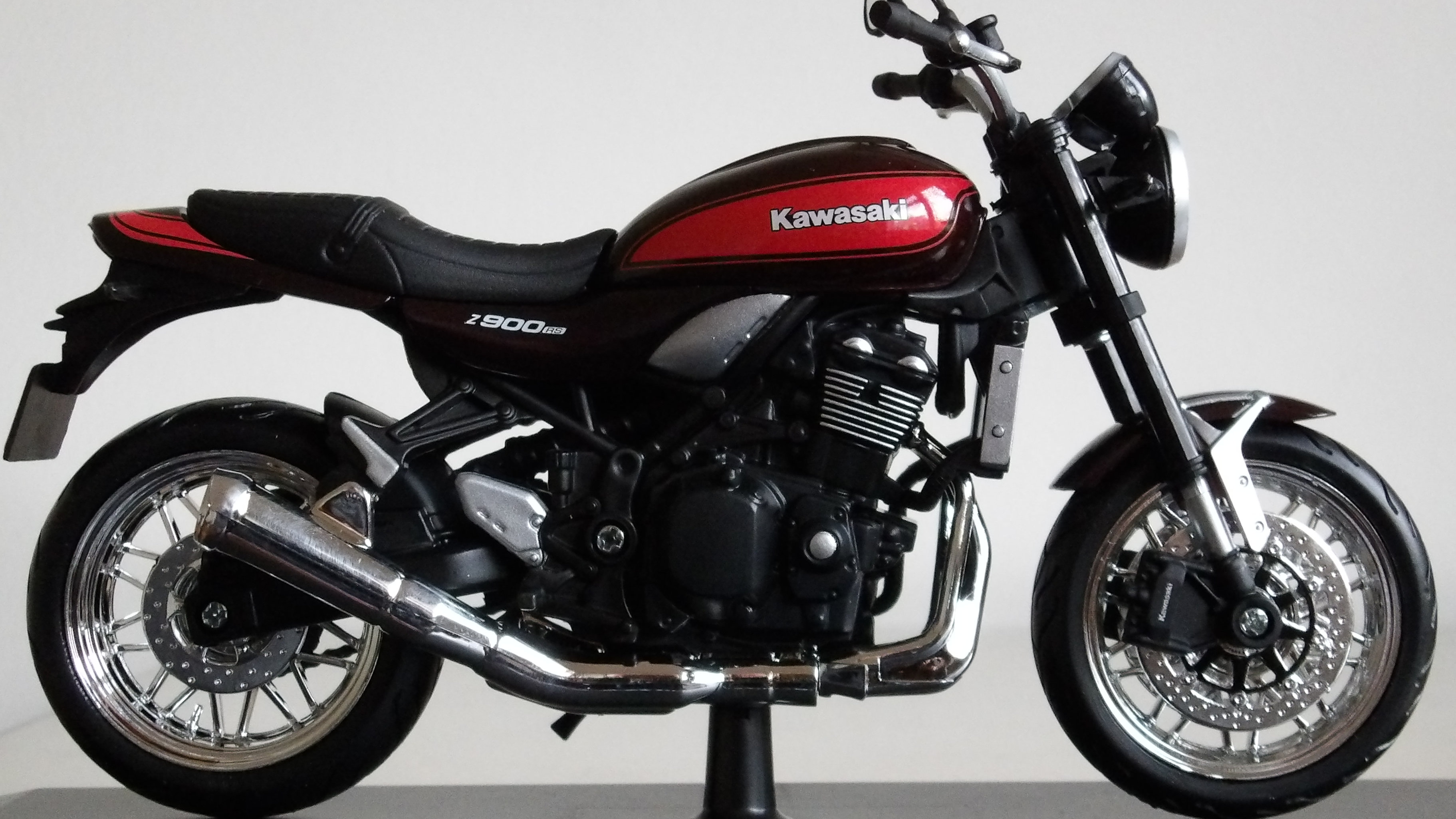
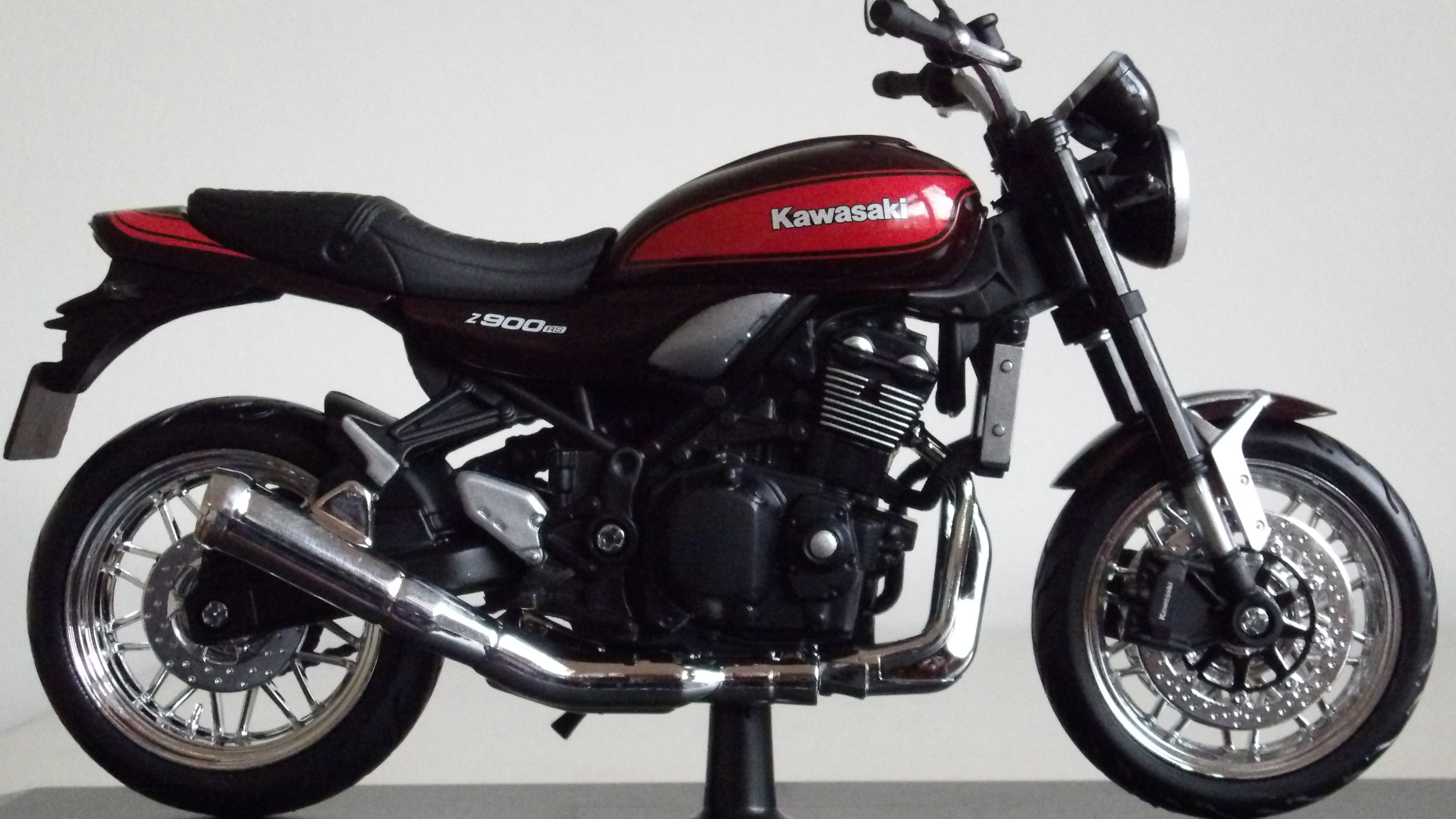
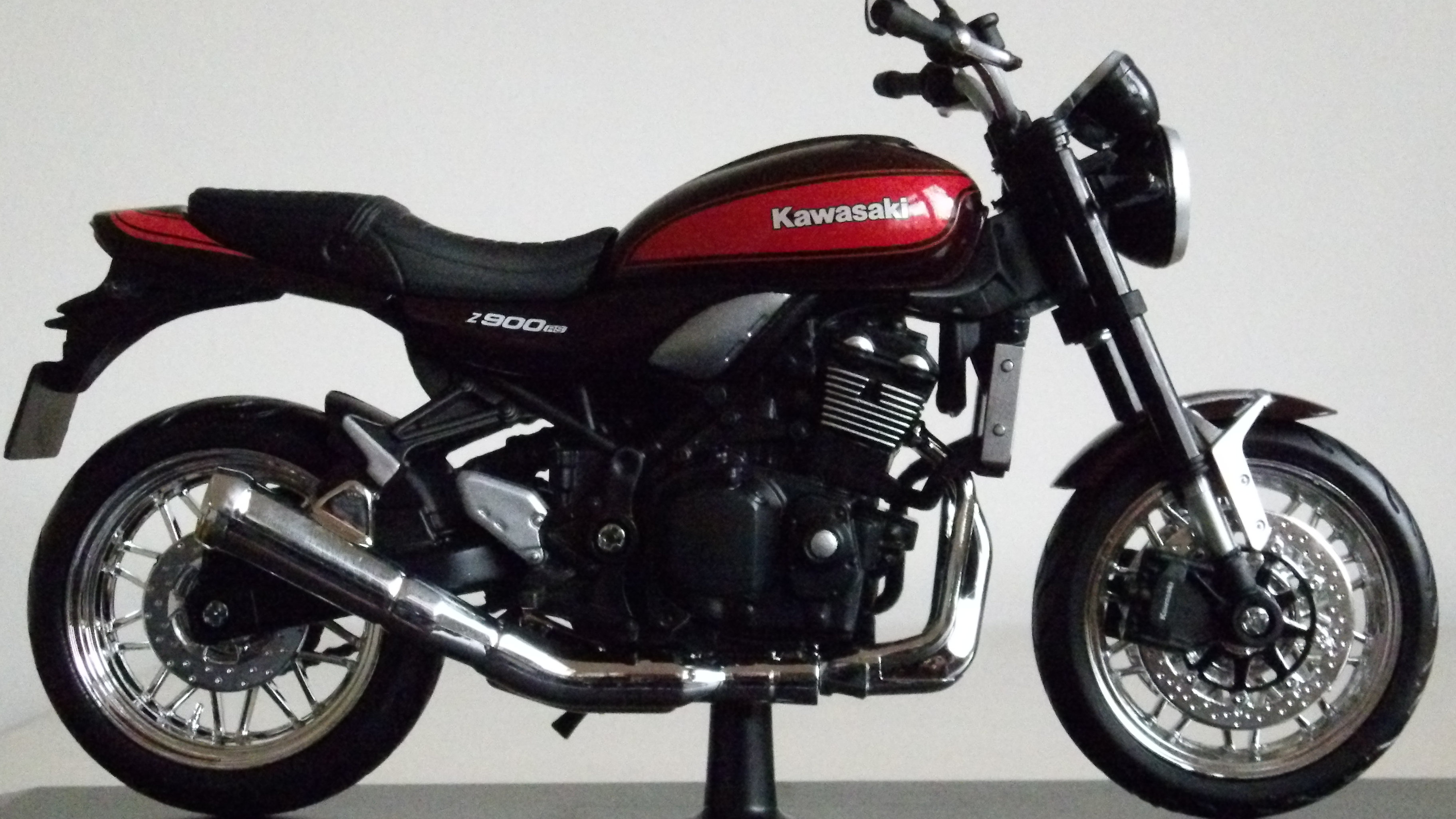
Color rendition looks very natural in the Standard setting, and pleasantly punchy in the Vibrant setting. Dynamic range is pretty good too, and overall picture quality is impressive for a camera with such a small 1/2.3” image sensor. You might think that fine detail and texture would be impaired with the WG-1000’s lower megapixel count but that’s not the case in practice. The following pair of images show how the colorful hedge at the back of my garden look in Standard and Vivid settings.


Pentax WG-1000: Sample Images
The following gallery of images was shot at the Bishop’s Palance and Gardens in the English city of Wells. I used the Vivid color settings throughout, which works well for giving adventure and vacation snaps that punchy picture postcard look.
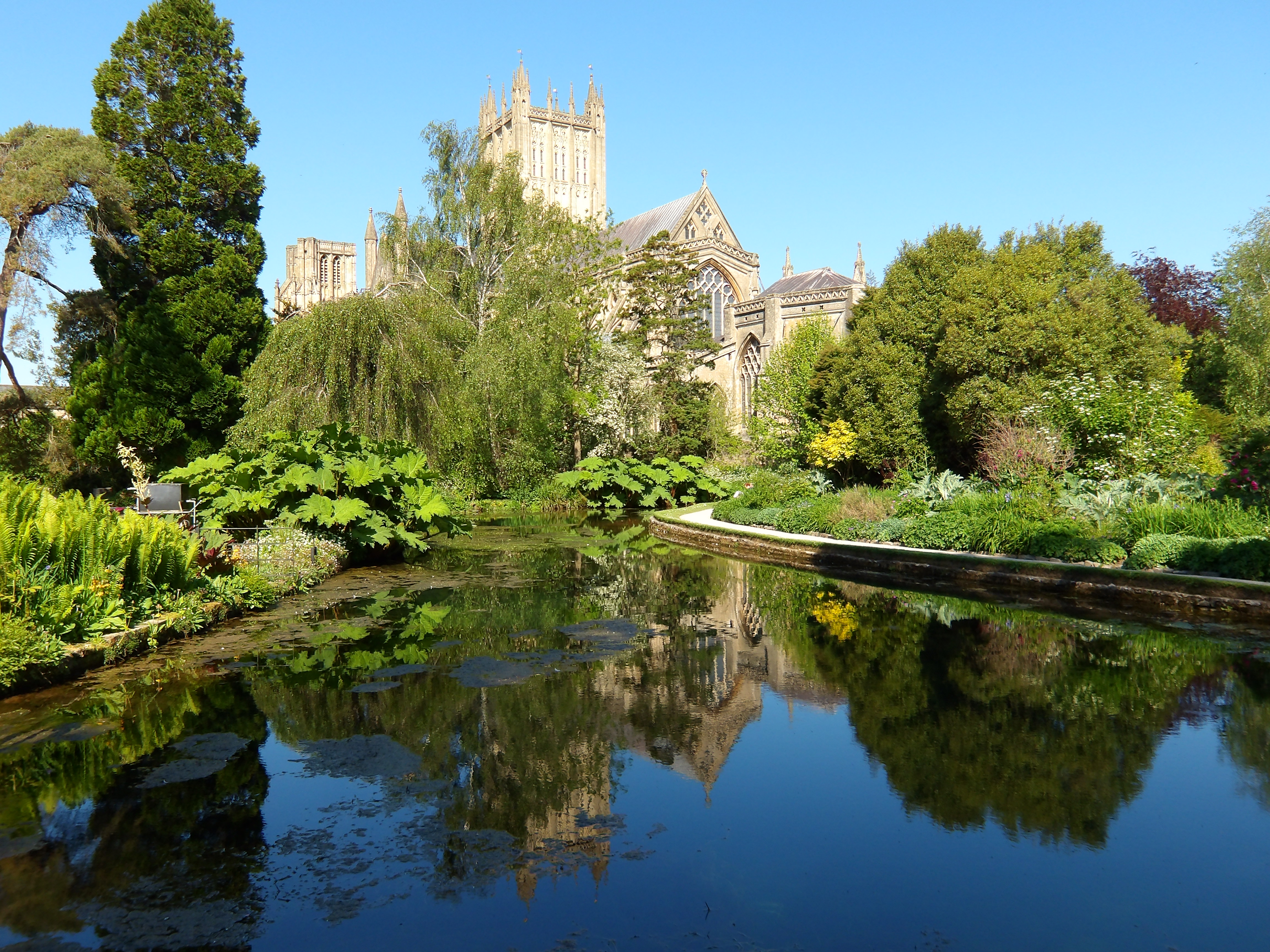





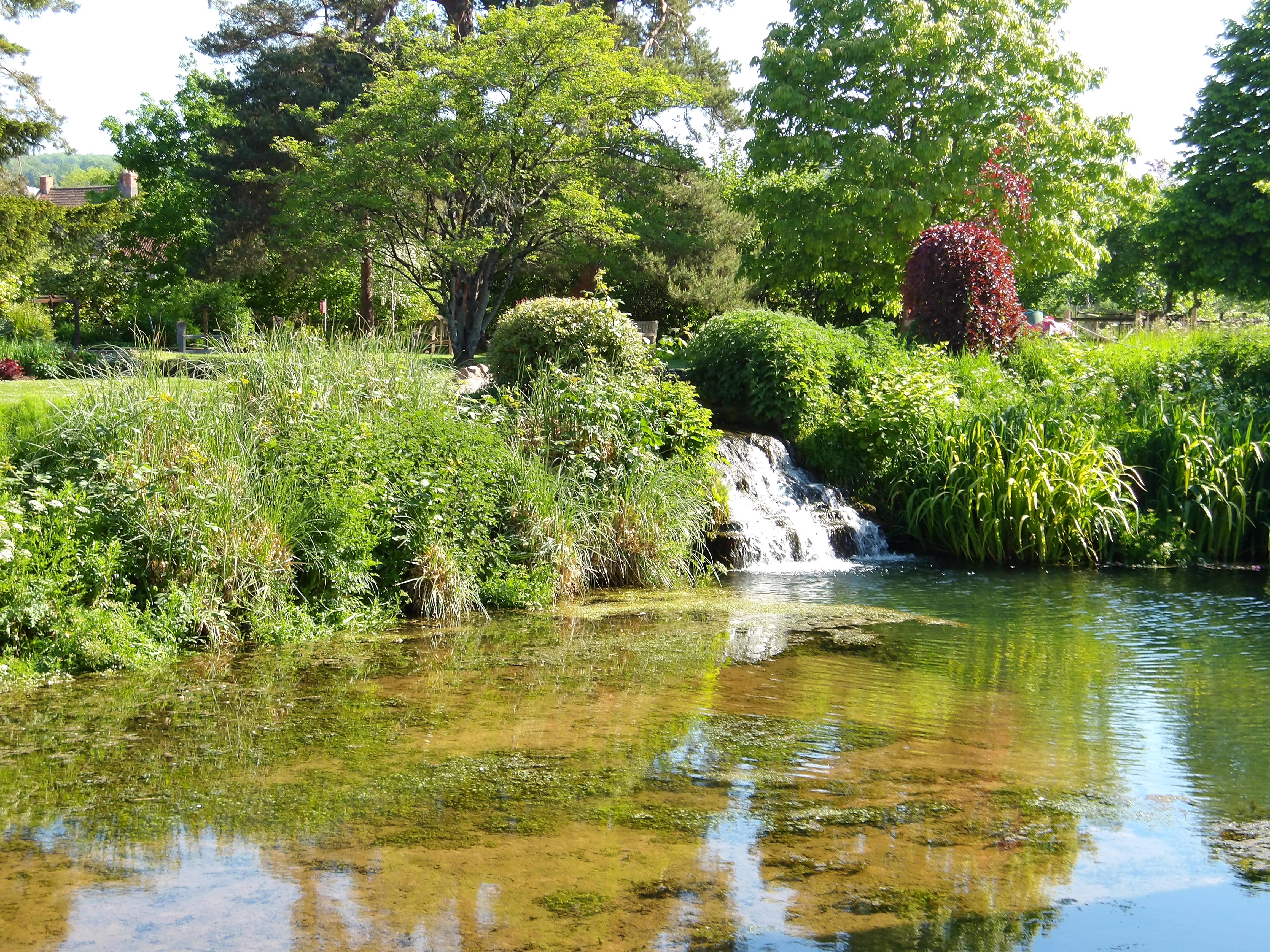

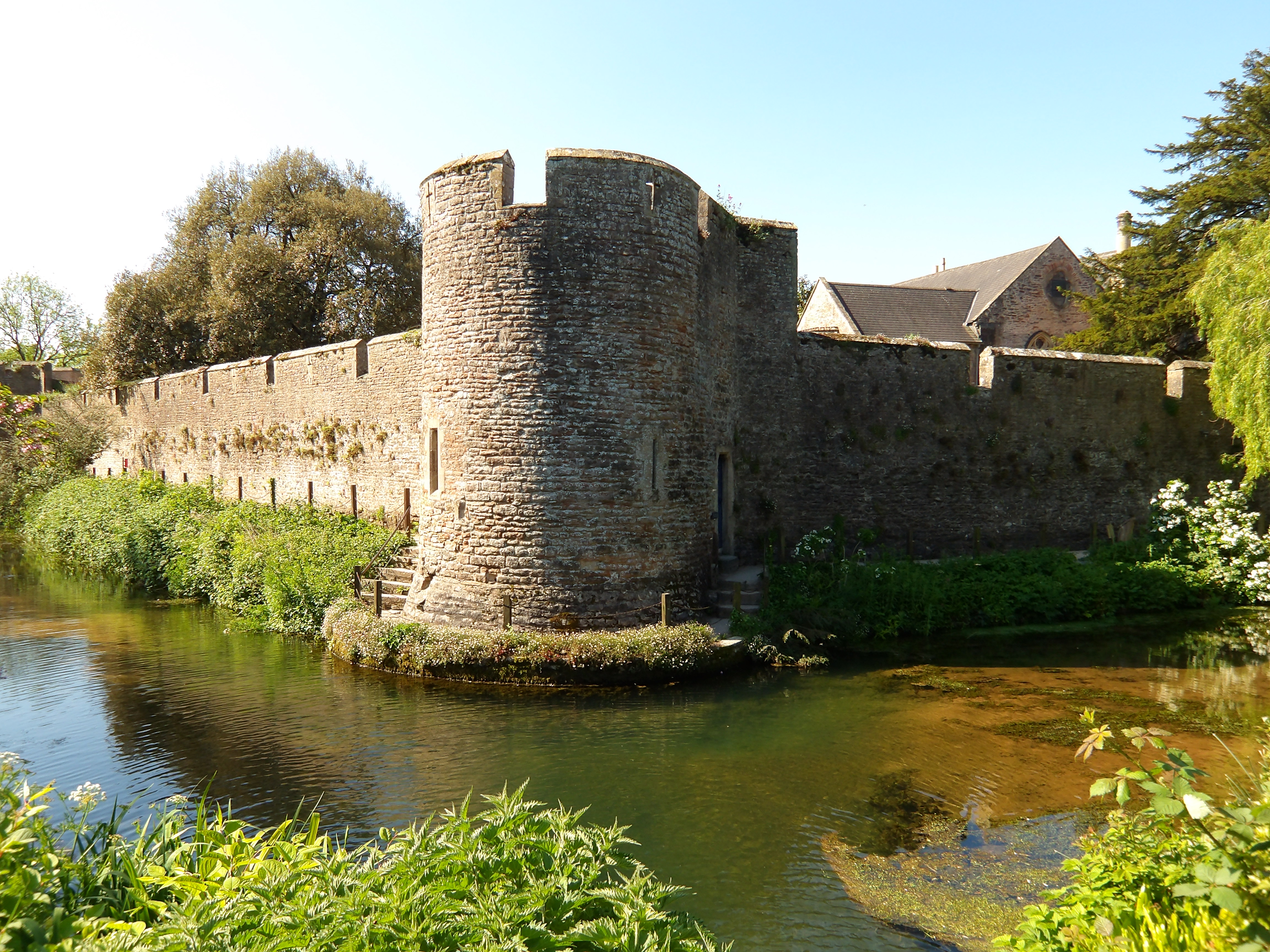

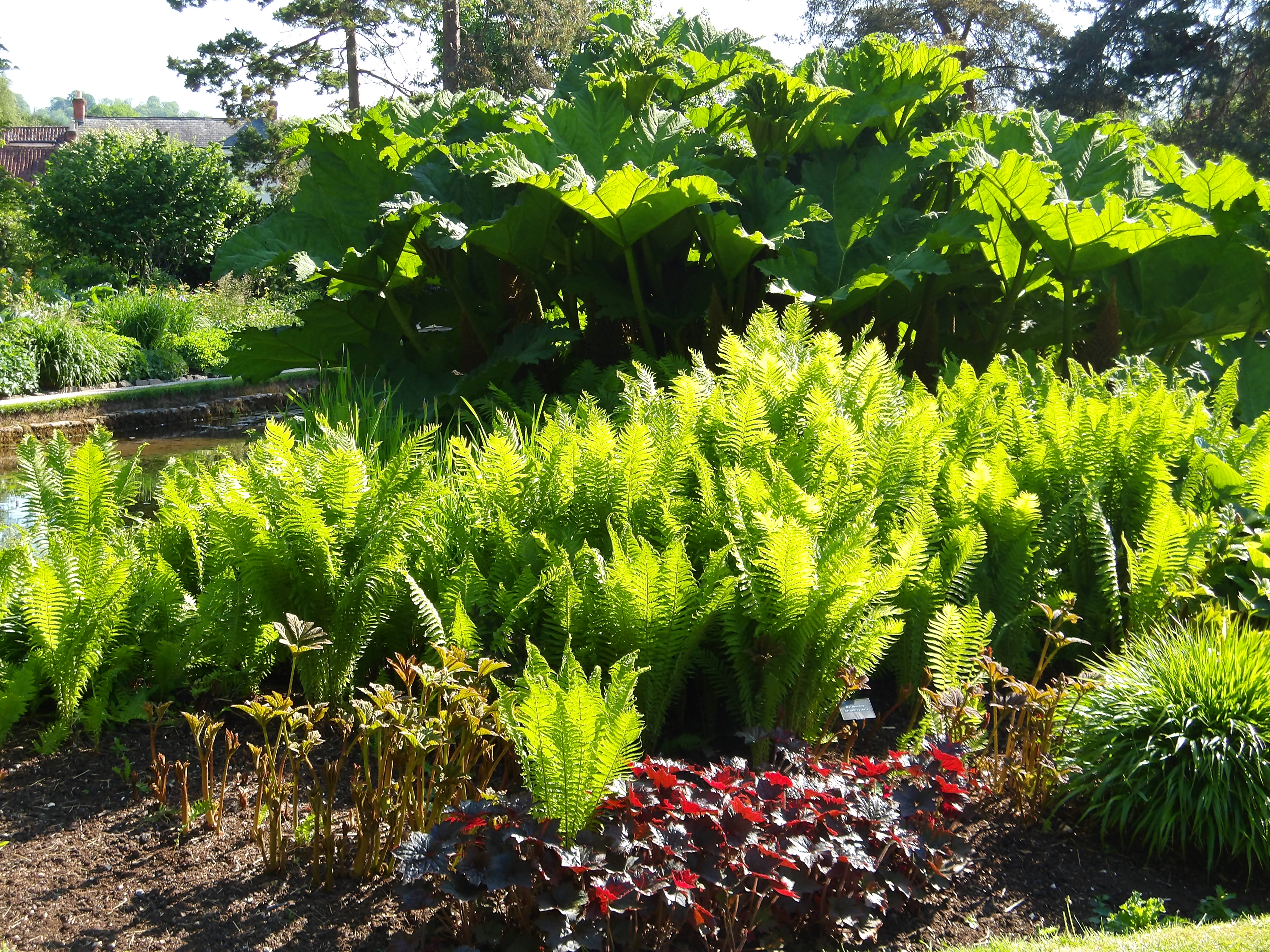







Pentax WG-1000: Video
Video resolution of the WG-1000 maxes out at 1080p at 30fps. The quality is none too shabby but the electronic image stabilization made little to no difference during my testing. I found that handheld video capture was pretty shaky throughout, as you’ll see from the following clip.
Pentax WG-1000: Verdict
I enjoyed my time with the Pentax WG-1000. I reckon it’s a fun camera to use when you’re literally having fun, and want to substitute the serious business of photography with the joy of shooting snapshots when you’re out enjoying yourself, whether you’re playing beach games, snorkeling, canoeing or just roaming around. It’s a shame you can’t connect to other devices via Wi-Fi or Bluetooth, to share your exploits, but it’s a neat and really tough little camera that’s very competitively priced for one that’s so waterproof, dustproof and, as Pentax likes to say, adventureproof.
Features ★★★☆☆ | It’s got a 4x optical zoom lens and flash but the overall feature set is basic and it lacks Wi-Fi and Bluetooth. |
Design ★★★★☆ | The camera is properly rugged in a waterproof, shockproof and dustproof kinda way but the rear screen is pretty small and low-res. |
Performance ★★★☆☆ | There are lots of color settings and scene modes. Autofocus and metering are consistent, and image quality is pretty good considering the very small sensor. |
Value ★★★★☆ | It’s not the cheapest camera on the market but is good value considering its waterproof, dustproof and shockproof build. |
Alternatives
The Pentax WG-8 is about twice the price of the WB-1000 but has tougher credentials, including being waterproof to a depth of 20 meters (65.6’) for up to two hours, dustproof, freezeproof to -10C (14F), drop-proof from a height of 2.1m (6.8’) and crushproof to 100kgf.
The Kodak PixPro WPZ2 is another tough, waterproof, dustproof and shockproof camera that aims to keep costs to a minimum. Nevertheless, it features a 4x optical zoom lens, a 16MP image sensor and has built-in Wi-Fi.
Matthew Richards is a photographer and journalist who has spent years using and reviewing all manner of photo gear. He is Digital Camera World's principal lens reviewer – and has tested more primes and zooms than most people have had hot dinners!
His expertise with equipment doesn’t end there, though. He is also an encyclopedia when it comes to all manner of cameras, camera holsters and bags, flashguns, tripods and heads, printers, papers and inks, and just about anything imaging-related.
In an earlier life he was a broadcast engineer at the BBC, as well as a former editor of PC Guide.
You must confirm your public display name before commenting
Please logout and then login again, you will then be prompted to enter your display name.
